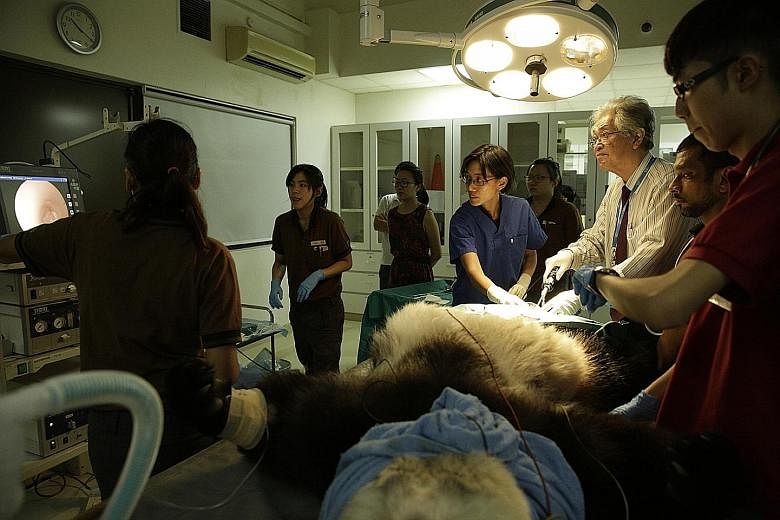Natural mating provides a higher chance of pregnancy, but vets and keepers at the River Safari have been using artificial insemination in the past two years as the panda duo are still learning how to mate.
To collect his semen sample, the male panda is anaesthetised and electro-ejaculation carried out. A probe is inserted into the panda's anus and placed over the prostate gland. An electric current then stimulates the gland to produce the semen.
The semen sample is then inserted into the female's uterus using an inseminating catheter. Vets and keepers observe physical signs as well as hormone levels to see if the female is coming on heat and to get the timing right for the artificial insemination.
This year, sperm samples were collected from Kai Kai in February and March, and frozen before the breeding season in April. A fresh sample was collected from Kai Kai on the day of insemination.
Carolyn Khew
• Information from Dr Serena Oh

